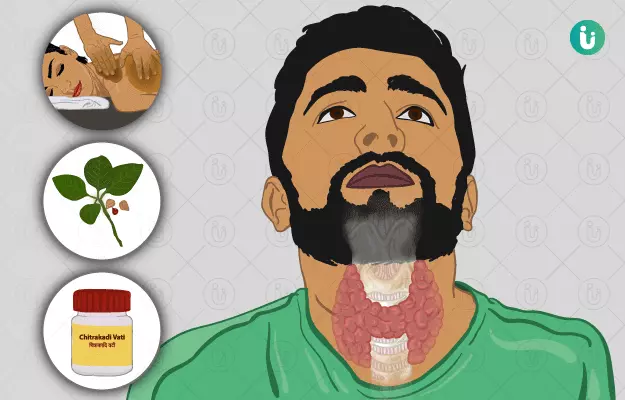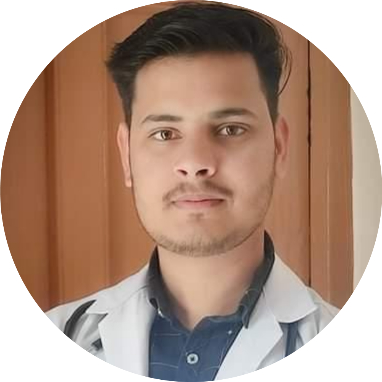Thyroid gland is an endocrine gland located below Adam’s apple in the neck. It produces a number of hormones including, T3 (triiodothyronine) and T4 (thyroxine) hormones. These hormones play a vital role in regulating pulse rate, body temperature, digestion and mood. An overactive or underactive thyroid gland can lead to thyroid conditions such as hypothyroidism and hyperthyroidism, both presenting with their own characteristic symptoms. In Ayurveda, the thyroid gland is not well studied and the most common thyroid conditions are classified under the term galaganda in Ayurveda.
Galaganda is characterised by an enlargement or swelling of the thyroid gland, which could be due to hyperthyroidism (overactive thyroid) or hypothyroidism (underactive thyroid).
People with galaganda may experience hyperthyroidism-related symptoms like shaking, agitation, diarrhoea and rapid heartbeats or may experience hypothyroidism-related symptoms like dry skin, weight gain and constipation. Sometimes galaganda may be asymptomatic. Thyroid cancer, Graves’ disease, being exposed to radiation or thyroiditis are some other causes of galaganda.
Panchakarma (five therapies) therapies including vamana (medical emesis) and virechana (purgation) along with rasayana chikitsa (rejuvenation therapy) help reduce swelling and treat galaganda. External applications like a lepa (coating the affected body part with medications) are also helpful in the treatment of galaganda. Herbs such as nirgundi (five-leaved chaste tree) and ashwagandha (Indian ginseng) and herbal formulations including kanchanar guggulu vati and chitrakadi vati are effective in treating galaganda.

















